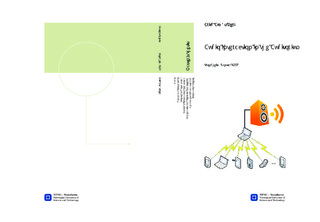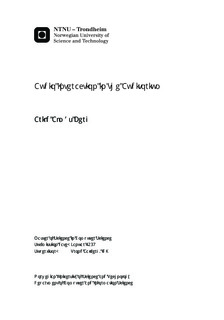| dc.description.abstract | During lectures with many students and conferences with large audiences there is often a wish to establish a two-way communication between the speaker and the audience. Discussions, questions and audience participation normally enhance the value of a lecture or presentation. One barrier for a good two-way communication is that large auditoriums make it difficult for the whole audience to hear a random audience member speak. Today, some conferences support handout microphones or those who wish to speak may queue up in front of a stationary microphone, but this is not usually found at lectures in large auditoriums.
In this thesis, a proposal for a design and a prototype system that simplify the interaction between the lecturer and the audience is described. Today, almost everyone have access to a smart phone, tablet or other handheld device. The design presents a system where these handheld devices act as both microphones and clients to a server which is connected to any auditorium's speakers. The system is a type of interaction system, which focuses on the use of voice from clients to server.
A lecturer can use his or her personal computer, connect it to a speaker and run the server side of the system. Every student may use their own handheld device, connect it to the running server, and speak into the device as microphone for the auditorium. With this system, audience members are able to speak with a normal voice whether they are seated in the front or in the back of the auditorium. As the voice is transmitted through speakers, everyone are able to hear what is said without any need of repetition.
Today, almost all handheld devices support both WiFi and Bluetooth. The thesis gives an overview of the two technologies, and gives a reasoning for WiFi as the chosen the prototype solution. Other covered topics are range and connections. Testing of the prototype reveals a few challenges that should be further looked into. A complete system may improve the overall collaboration inside the auditorium. | |

